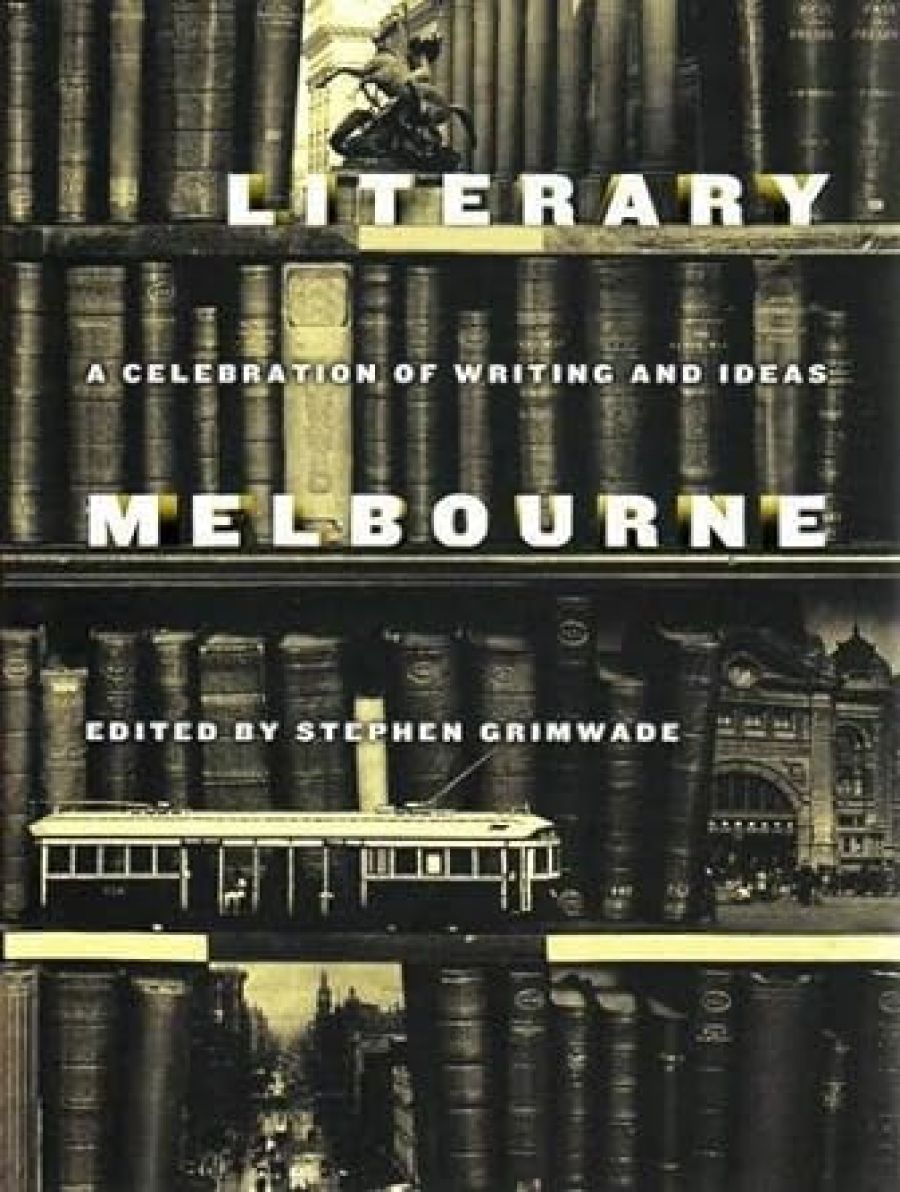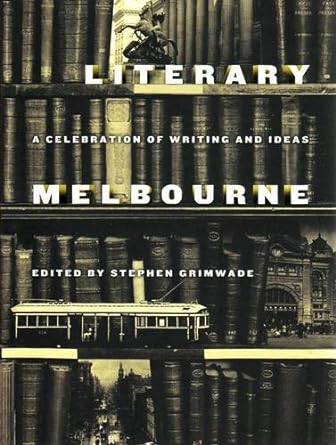
- Free Article: No
- Contents Category: Literary Studies
- Review Article: Yes
- Article Title: Literary addicts
- Online Only: No
- Custom Highlight Text:
Every now and again, the future of the book emerges as a topic of anxious discussion among literary types. Will books become obsolete, discarded in favour of electronic reading devices with sleek design and smooth contours, or merely lose relevance given all the digital distractions? Literary Melbourne is one publication which betrays no such anxieties. Published to mark Melbourne’s designation as a UNESCO City of Literature, it is not only a celebration of all things literary but an assertion of the history, relevance and power of books, writing and ideas. Yet, like the city whose literary culture it celebrates, this volume speaks rather than shouts. The muted tones of its cover, echoed throughout in shades of sepia, brown and grey, announce that this is no flamboyant publication: for all its evocation of city streets, it is an ‘indoor’ book, inviting reflection and discussion. Above all, as indicated by small courtesies such as the ‘Ex Libris’ label on the endpage and the ribbon bookmark, this is a book for booklovers, for those hopeless addicts who like to own, hold and return to their books.
- Book 1 Title: Literary Melbourne
- Book 1 Subtitle: A Celebration of writing and ideas
- Book 1 Biblio: Hardie Grant Books, $24.95 hb, 254 pp
- Book 1 Cover Small (400 x 600):

Literary Melbourne sets out to trace the development of the city’s ‘unique literary culture’ and illustrate its role in the evolution of Australian literature. The selections fulfil this aim, not least because they are often not the obvious choice from the original works. Elizabeth Morrison, for example, chooses an emotional episode from Ada Cambridge’s A Marked Man (1894), which suggests a different Cambridge from that of her glittering descriptions of metropolitan Melbourne.
Grimwade acknowledges the limitations of the genre: readers, he suggests, will make their own ‘… roll call of those missing from this anthology’. Here is mine: notwithstanding the editor’s explanation that there is a preponderance of postwar source material, the balance seems unduly tipped against colonial writers. Not all readers are interested in times past. The inclusion of Gerald Murnane’s brilliant racehorses and the teaser from June Wright more than compensates for this loss. Literary Melbourne reveals the value of revisiting familiar writing, such as the opportunity to enjoy the humour in works encountered at school. This collection should send readers back to books such as Joseph Furphy’s Such is Life (1903) to see what they have been missing. It was clever, too, to include a passage from this book which refers to The Recollections of Geoffrey Hamlyn (1859), which appears earlier in the anthology.
The commentary gives a broad sweep of the literary landscape, acting as a useful background to the extracts. However, there is a tendency to collapse whole eras into a generalisation. Most glaring is the claim that after the gold rushes in Melbourne, ‘the next major changes in literature didn’t occur until well after the Second World War’. Although contraction is scarcely avoidable in survey works such as this, perhaps the reader should have been guided to more comprehensive accounts, such as The Cambridge Companion to Australian Literature (2000), to fill in some of the missing layers. Subtleties are inevitably glossed over in such an introduction. For instance, the reader could be left with the impression that Australians have always felt either Australian or British, while for much of our history many felt quite unequivocal about identifying as both. The extracts’ commentaries permit more detail; even with brief extracts we are left with an understanding of the writer’s place in the broader story.
Literary Melbourne is a visual as well as a literary encounter. It is illustrated with streetscapes, portraits, maps, book covers and more besides, mostly from the State Library of Victoria’s Picture Collection, all rendered in a poignant, almost sentimental, palette. What a delight it is to find Mrs Cole, the wife for whom the eccentric E.W. Cole advertised in a newspaper, seated in all her solemn magnificence between the sign for ‘Vegetarian and Food Reform Books’ and a file of ‘Medical Works’, marked ‘Private’. There is a balance between such playful visual images and more serious ones, such as the representations of indigenous Australians. One, in the ‘Apple to Zebra’ section, serves as a reminder that the English language has been a weapon of cultural assault and a tool of imperialism, generating an uneasy but important pause in the narrative of the book. Photographs of early Melbourne convey an impression of the city as a physical space. Visually, the reader is invited throughout this collection to wander through Melbourne’s streets and suburbs, a discursiveness that is complemented by the map and the guided walk at the end of the book.
Grimwade’s testament to the past and present literary cultures of Melbourne manages to evoke a specific sense of the city and its cultural production, while never losing sight of the wider context of national literature. It is clearly intended to appeal to a non-specialist audience and to visitors to Melbourne. This is achieved at times at the expense of a more nuanced representation of literary culture, especially in the imperial context. However, Literary Melbourne is not intended to be the final word on such matters, rather the beginning of many conversations about books, ideas and literature.


Comments powered by CComment